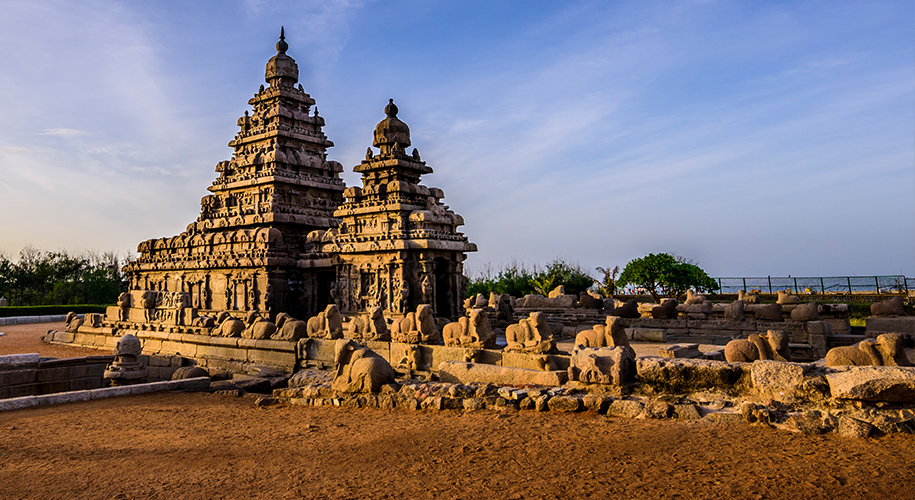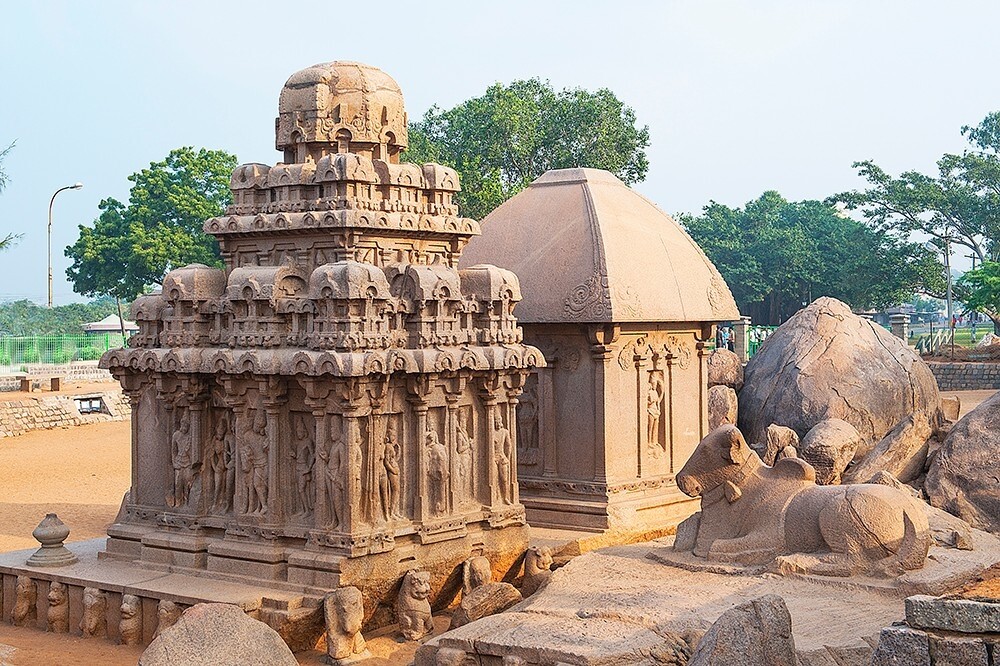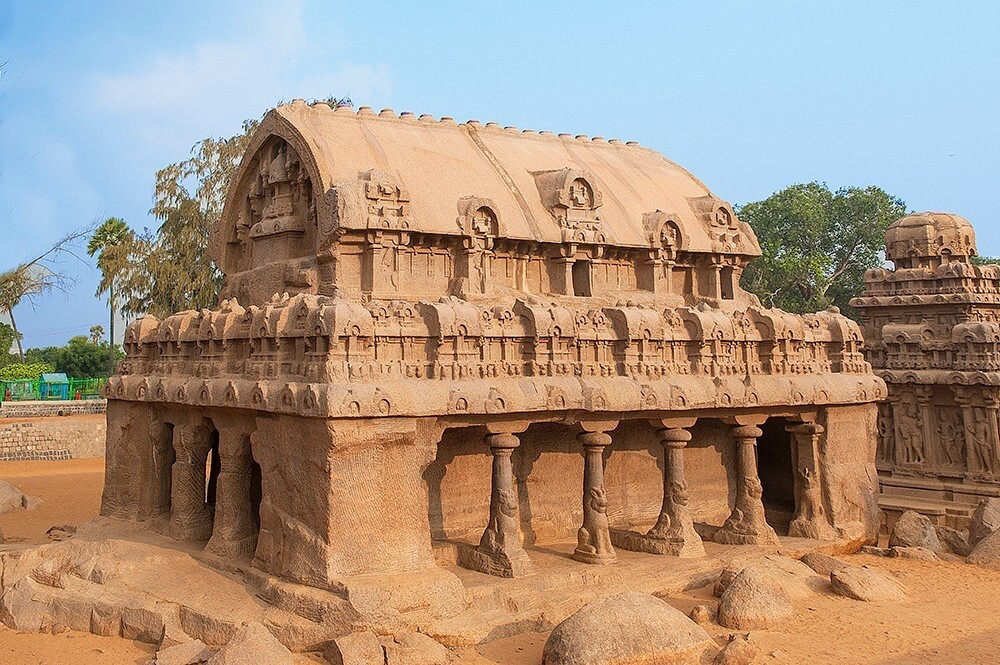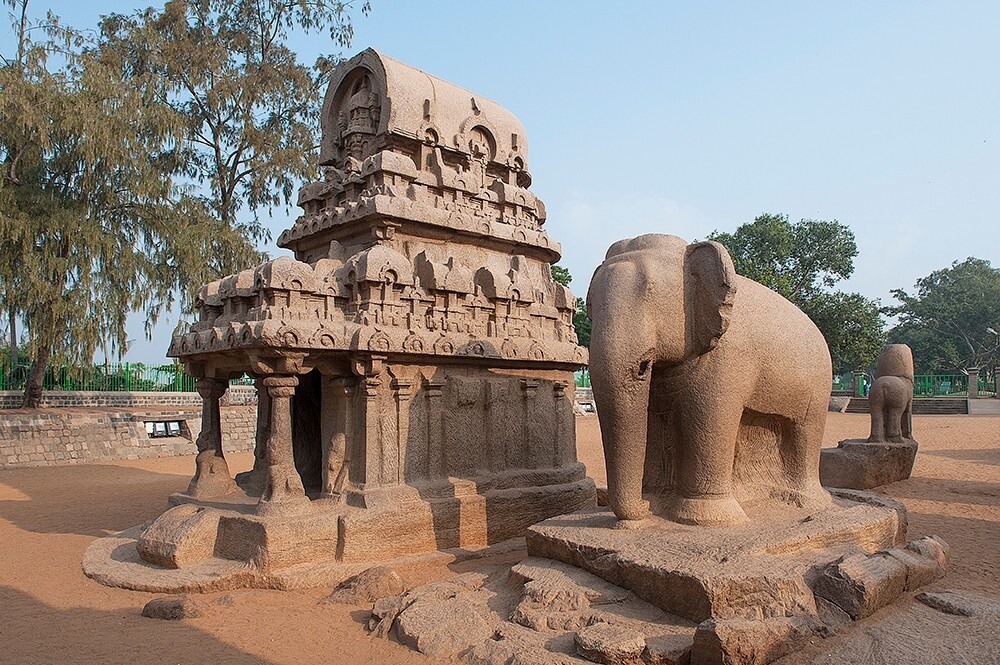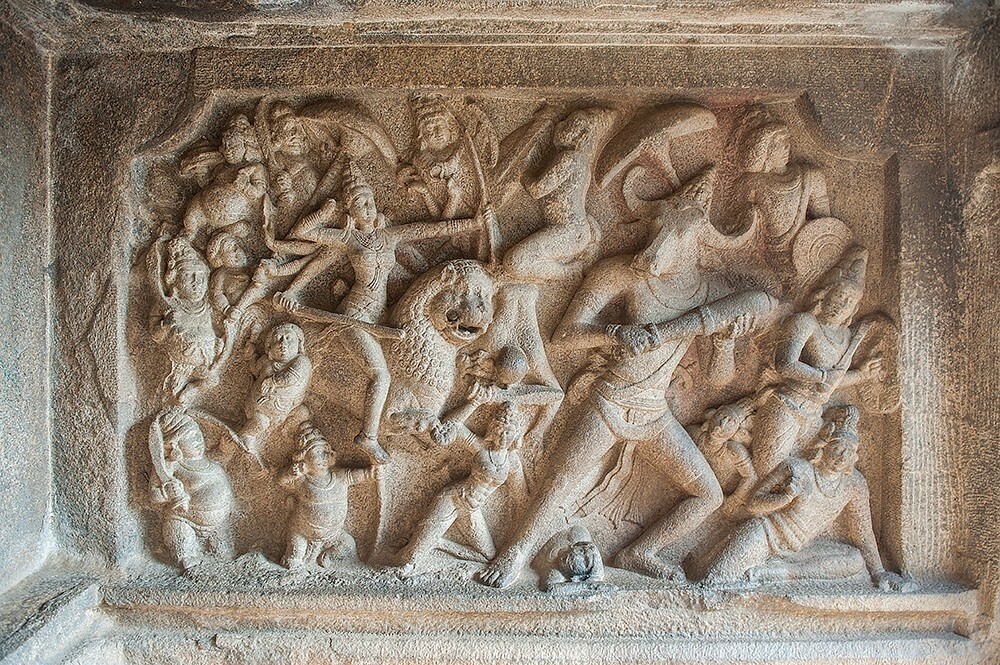Group of Monuments at Mahabalipuram
Mahabalipuram (or Mamallapuram), located along southeastern India’s Coromandel Coast, was a celebrated port city of the Pallavas. The group of monuments there consists of rock-cut cave temples, monolithic temples, bas-relief sculptures, and structural temples as well as the excavated remains of temples. The Pallava dynasty, which ruled this area between 6th and 9th centuries CE, created these majestic edifices.
The Group of Monuments at Mahabalipuram occupies a distinct position in classical Indian architecture. These majestic edifices mark the high quality of craftsmanship in the region during 6th century CE. The natural landscape was utilized in carving out these structures, thereby making the ability of the Pallava craftsmen universally known. The monuments may be subdivided into five categories:
The mandapas (rock-cut caves): During the time of Narasimhavarman-I Mamalla, new innovations were introduced in the rock medium in the form of cave temples. Notable examples of the cave temple are Konerimandapa, Mahishmardhini cave, and Varahamandapa. These rock-cut caves are richly embellished with sculptural representations known for their natural grace and suppleness. Noteworthy among them are Mahishamardhini, Bhuvaraha, Gajalakshmi, Tirivikrama, and Durga.
The rathas (monolithic temples): The monolithic temples are locally called “ratha” (chariot), as they resemble the processional chariots of a temple. These five monolithic temples are each hewn out of a huge boulder. They display the full form and features of the contemporary temple form and show variations both in ground plan and elevation. They are richly carved with artistic motifs and wall panels depicting many Hindu divinities and royal portraits.
The rock reliefs: The sculptural bas reliefs are another very important class of masterly creations created during Mamalla’s reign. There are four such reliefs at Mamallapuram, the most noteworthy among them being the Arjuna’s Penance and Govardhanadhari.
The temples: King Rajasimha introduced structural architecture on a grand scale. The earliest and most modest is the Mukundanayananar temple, followed by the Olakkanesvara temple, perched on a rock near the lighthouse. The tempo of structural edifices culminated in the creation of the famous Shore temple, having the most finite layout of a Dravida vimana, majestically fringing the sea.
The excavated remains: Sustained removal of the sand over a period of time has brought to light several buried structures around the Shore temple. Unique among them is a stepped structure, a miniature shrine, a Bhuvaraha image, a reclining image of Vishnu, and a well from Pallava King Narasimhavarman Rajasimha’s reign (638-660 CE), all of which are carved in the live bedrock. Remains of additional temples have recently been excavated, including one to the south of the Shore temple.
